Uncategorised

Particle Size Analyser (PSA)
Laser Diffraction Particle Size Analyzer facility (CILAS-1180) has been installed in the division during 2006 to analyse the sediment samples for particle size distribution. Particle Size Analyzer is widely used method to characterize the sediment particles based on diffraction of a laser light source by the samples under analysis. The analyzer is used to determine the size distribution of a powder, a suspension or an emulsion, based on light diffraction. When a particle is lightened by a monochromatic source (laser source) a diffraction pattern, called Airy’s pattern, is obtained at the infinity. This diffraction pattern gives the light scattering intensity I, in function of the diffraction angle ?. It is composed of concentric rings. The distance between the different rings depends on the particle size. The analyzer can also be used to visualize the shape of the particle which is under suspension.
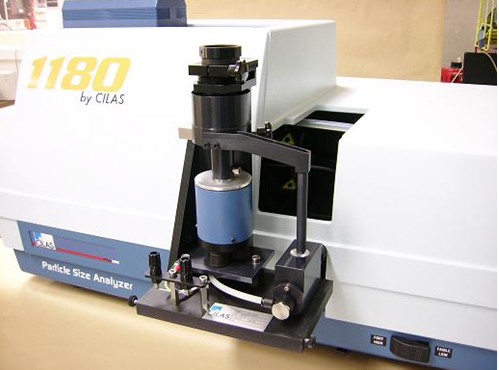 The instrument is capable of measuring dry and wet samples of particle size ranging from 0.04 ?m to 2500 µm. The facility is gaining importance from the conventional analysis of sieving and pippeting due to the cover of a wide range of grain sizes, small amount of samples, short time for analysis (5-10min. per sample), high repeatability and can analyze the non-dispersed samples. The facility has been opened to the public/academic institution on payment basis.
The instrument is capable of measuring dry and wet samples of particle size ranging from 0.04 ?m to 2500 µm. The facility is gaining importance from the conventional analysis of sieving and pippeting due to the cover of a wide range of grain sizes, small amount of samples, short time for analysis (5-10min. per sample), high repeatability and can analyze the non-dispersed samples. The facility has been opened to the public/academic institution on payment basis.
The preparation of the sample is the most important step when making a measurement. The accuracy for the measurement depends on sample preparation and extraction. One has to carefully define a method for extraction and sample preparation in order to obtain precise and reproducible results. For a measurement in dry mode, the sample should be first treated and then cone and quartered to represent an amount between 1 mg and 100 mg. In liquid mode representative of the powdered or liquid sample should be poured into the tanker.
Contact:
Group Head, MGG
Scientist-In-Charge
T: 0471-2511660
E: This email address is being protected from spambots. You need JavaScript enabled to view it.

SEM-EDS Laboratory
The SEM-EDS Laboratory houses a TESCAN VEGA 3 LMU high-performance, Variable Pressure Analytical SEM with LAB6 having high resolution of 2 nm, along with the most advanced LN2-free high-resolution, high-speed EDS (QUANTAX 200 with XFlash®6/30 SDD Detector) from Bruker with Energy resolution < 126 eV and a 30 mm2 active window area. It is also equipped with SE, R-BSE, Colour + Panchromatic Cathodoluminescence (CL) Detectors with digital image processing and storage capabilities.
The SEM-EDS is capable of capturing ultra structural details of samples as images in digital mode which in turn permits the observation and characterization of heterogeneous organic and inorganic materials, thereby providing high-resolution and high depth-of-field images of sample surface and near-surface. The instrument can magnify specimens up to 10,00,000 times. SE Detector provides Topographic Contrast Imaging using Secondary Electrons. Retractable BSE detectors with YAG scintillator provides compositional contrast, material contrast, phase contrast imaging and phase Identification using Back Scattered Electrons.
The state of the art EDS facility provides qualitative and semi quantitative compositional analysis of different phases, grains and selected points of the samples including Multi Point, Line Scan and elemental mapping of the selected area. Elements from Be (5) to Americium (95) with a detection limit of 1000 ppm can be analyzed. Conductive coatings of gold or carbon is deposited for sample preparation of non-conducting samples using a Quorum SC7620 sputter coater or Quorum CA7625 evaporative carbon coater.
Samples of rocks, minerals, fossils, ores, biological, pharmaceutical, metallurgical, polymer materials can be studied using SEM-EDS facility. NCESS primarily uses the equipment for mineralogical investigations, petrological studies, characterisation of palaeontological samples and interpretation of sedimentological and depositional environments.
Contact:
Dr. Sneha Mukherjee
Scientist-In-Charge
T: 0471-2511669
E: This email address is being protected from spambots. You need JavaScript enabled to view it.

X-ray diffraction (XRD)
X-ray diffraction (XRD) is a rapid analytical technique primarily used for phase identification of a crystalline material and can provide information on unit cell dimensions. X-ray diffraction is most widely used for the identification of unknown crystalline materials (e.g. minerals, inorganic compounds). Determination of unknown solids is critical to various geological applications.
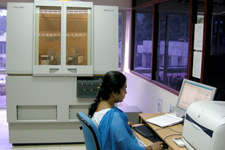 XRD measures the intensities of a reflected X-Ray beam from a small area. Atomic-level spacing within the crystal lattice of the specimen can be obtained by the results. This helps us in understanding details of the crystal structure for the substance. XRD helps in identifying different phases with identical compositions with finer details of the crystal structure, such as the state of atomic “order”. In addition, strain analysis and determination of the degree of crystallization can also be assessed. Due to this versatility XRD finds wide range of applications in geology, material science, environmental science, chemistry, forensic science, pharmaceutical industry and others.
XRD measures the intensities of a reflected X-Ray beam from a small area. Atomic-level spacing within the crystal lattice of the specimen can be obtained by the results. This helps us in understanding details of the crystal structure for the substance. XRD helps in identifying different phases with identical compositions with finer details of the crystal structure, such as the state of atomic “order”. In addition, strain analysis and determination of the degree of crystallization can also be assessed. Due to this versatility XRD finds wide range of applications in geology, material science, environmental science, chemistry, forensic science, pharmaceutical industry and others.
The XRD facility at NCESS, commissioned in 2006, consists of a PANalytical 3 kW X’pert PRO X-ray diffractometer. NCESS primarily uses the facility in geological application, few which are in Environmental Studies, mineral identification and genesis, stratigraphic analysis and in mineral-resource assessments. Few Other applications include:
- Characterization of crystalline materials
- Identification of fine-grained minerals such as clays and mixed layer clays that are difficult to determine optically
- Determination of unit cell dimensions
- Measurement of sample purity.
Contact:
Group Head, MGG
Scientist-In-Charge
T: 0471-2511668/1669/1504
E: This email address is being protected from spambots. You need JavaScript enabled to view it.

Sedimentology Laboratory (SL)
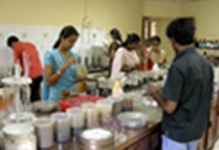 The sedimentology laboratory is one of the core laboratories of NCESS since its inception. The laboratory has facility for both wet and dry sample analysis. The wet analysis includes the preparation of samples for textural, mineralogical, geochemical and clay mineralogical analysis. The laboratory has a deep freezer for storing and archiving the sediment samples and sediment cores. The laboratory is used extensively by the research students/project fellows and at a given time more than 5-6 persons work in the laboratory. The laboratory is opened even during the late hours for the students to complete the work. The dry unit of the laboratory has a facility for sieving the sediment samples for grain size distribution.
The sedimentology laboratory is one of the core laboratories of NCESS since its inception. The laboratory has facility for both wet and dry sample analysis. The wet analysis includes the preparation of samples for textural, mineralogical, geochemical and clay mineralogical analysis. The laboratory has a deep freezer for storing and archiving the sediment samples and sediment cores. The laboratory is used extensively by the research students/project fellows and at a given time more than 5-6 persons work in the laboratory. The laboratory is opened even during the late hours for the students to complete the work. The dry unit of the laboratory has a facility for sieving the sediment samples for grain size distribution.

Field Research Facility (FRF)
The Field Research Facility established at Valiathura, near Thiruvananthapuram is equipped with facilities for collection of coastal environmental data for various projects. The important facilities available are Valeport wave gauge, anemograph and automatic video camera. The pier jetting out into the sea for a length of roughly 100-m from the shoreline is a very useful platform for installation of equipments and for making littoral environmental observations. A wave rider buoy has also been installed in the shallow waters off Trivandrum under a project funded by the INCOIS, Hyderabad. The Datawell Directional Waverider buoy measures the wave height and period by measuring the vertical acceleration by means of an accelerometer placed on a gravity stabilized platform and by double integrating the acceleration to get the displacement. The direction of wave approach is measured based on the translational principle.The data from the buoy are transmitted through VHF/GSM/INSAT-1C satellite system to the shore station located at CESS Thiruvananthapuram at synoptic hours. The data transmission is at every three hour interval. Also, the data from GPS mounted on the wave rider buoy can be used to monitor the position of the buoy continuously and in tracking the buoy. The data received from the buoy would be then sent on real-time to INCOIS, Hyderabad for further dissemination to the operational users such as India Meterological Dept (IMD), Coast Guard (CG), INCOIS, Navy, ONGC and other agencies.

The data will be disseminated to the fishermen and coastal community by organising workshops and by employing methods of mass communication like television, radio, news paper, VHF, etc. The real time validation of sea state forecast for the Kerala coast will be carried out by INCOIS. Further, the dissemination of sea state conditions and potential fishing zone through electronic display board being established at Vizhinjam fishing harbour and other important fishing harbours.
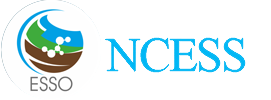

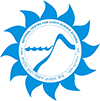

 RTI Act
RTI Act

